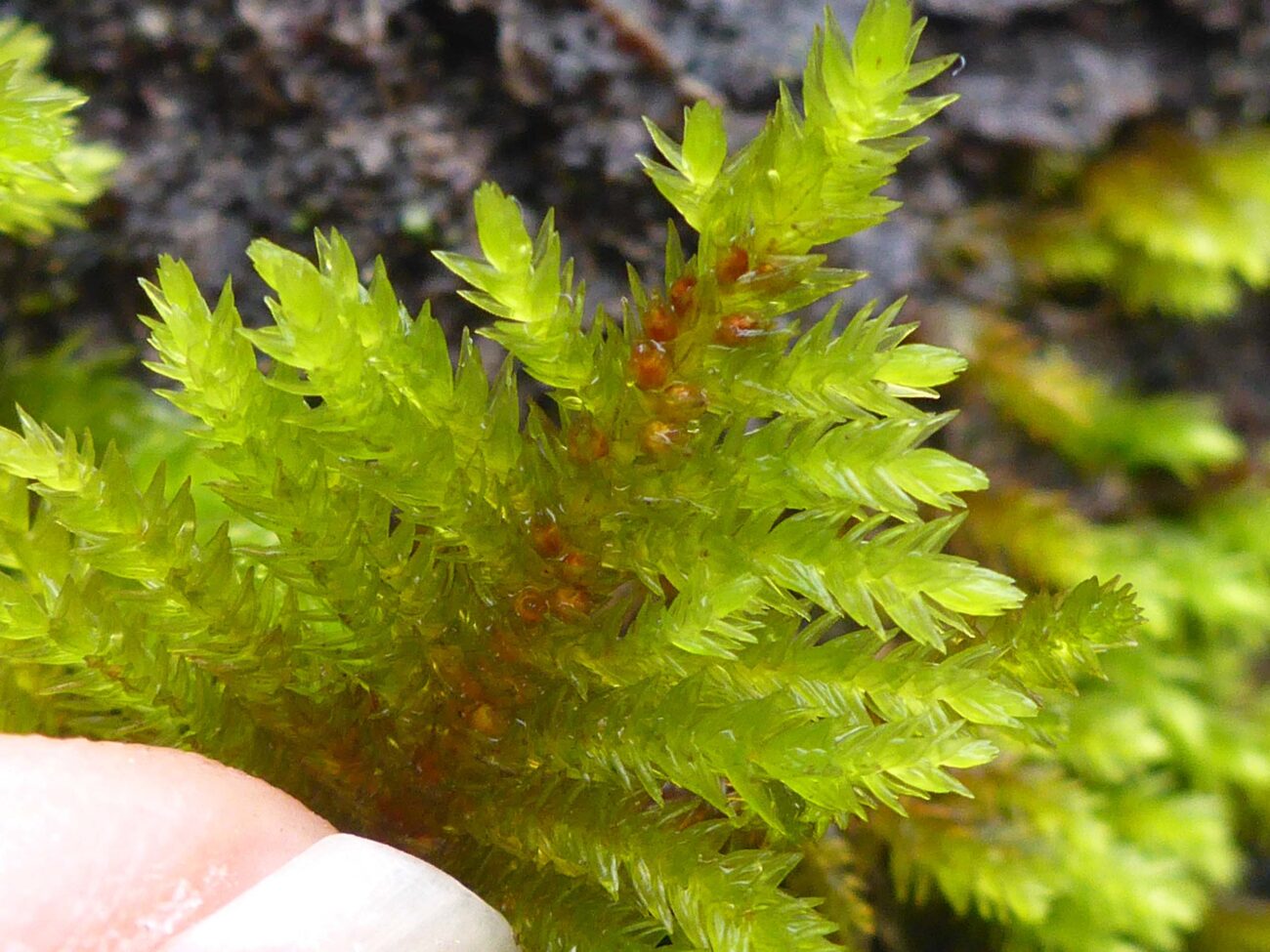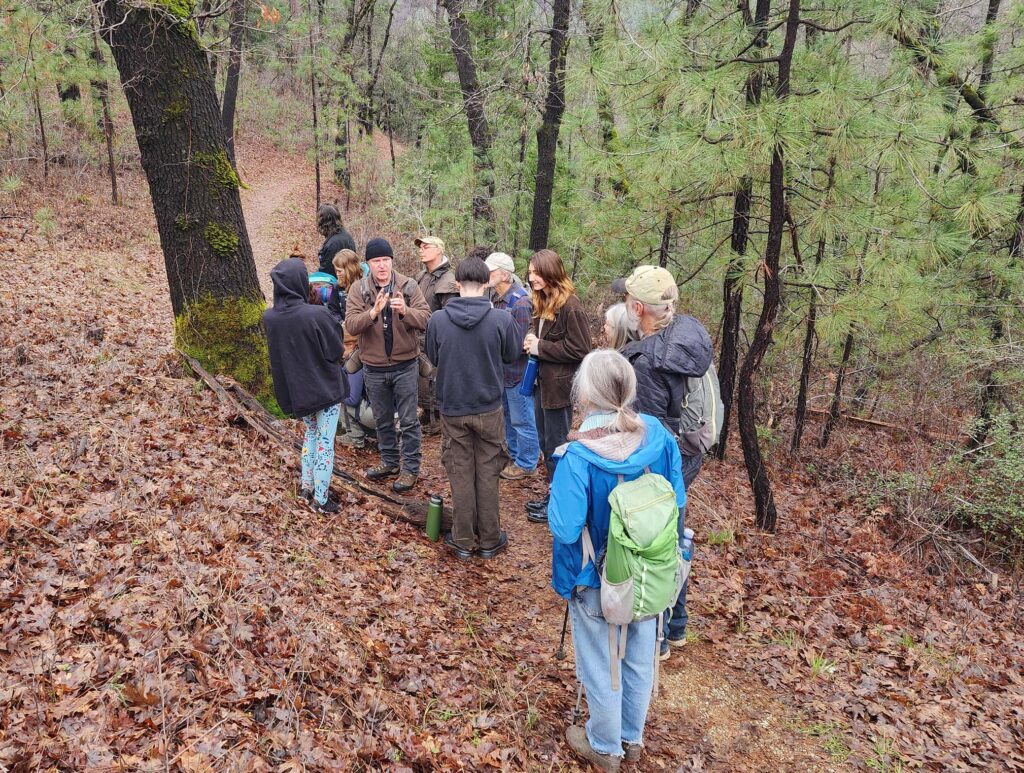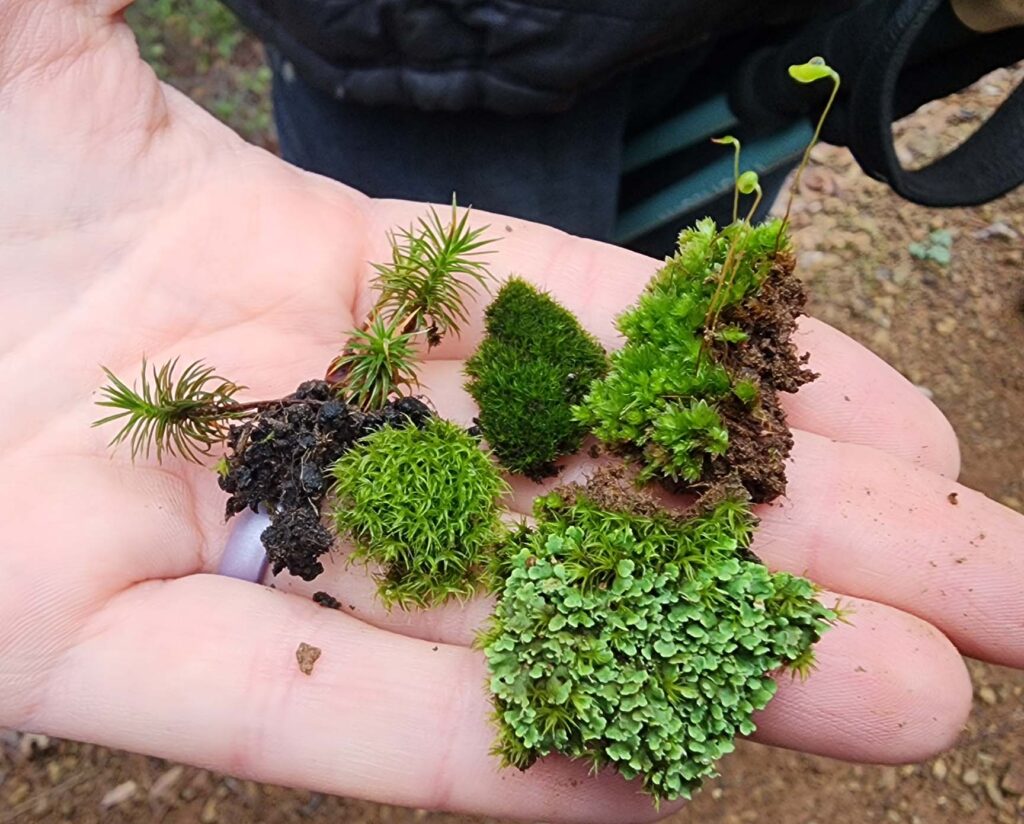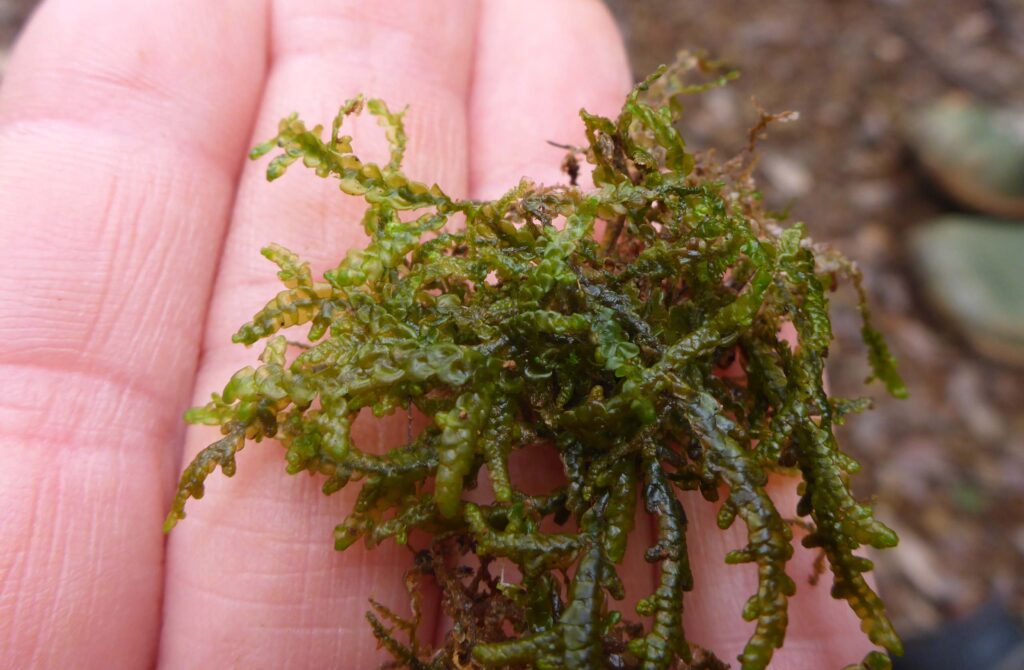
The Shasta Chapter hosted a wildly successful bryophyte blitz on February 15 and 16, 2024, led by Shasta Chapter CNPS member Scot Loring (also a member of the Bryophyte Chapter, the first state-wide chapter of CNPS).
The event began on Thursday afternoon, when we commandeered Susannah Fulton’s Shasta College botany lab. The captive class of students was augmented by a number of Chapter members, filling the room to capacity. Scot provided a PowerPoint presentation with an overview of the mosses, liverworts, and hornworts; their life cycle, evolution, and relationships, and key distinguishing features. The talk was mixed with hands-on lab work to demonstrate some of the features and structures being discussed.

Photo taken by Don Burk at Shasta College on February 15, 2024.
Thursday evening featured a casual dinner and social gathering at Final Draft, followed by a lightly attended evening presentation. However, over 16 bryo-enthusiasts showed up for the Friday field trip at Waters Gulch, including a number of Shasta Collegians.

We were introduced to a mind-boggling number of mosses and liverworts during our field trip, and also took time out to admire three types of jelly fungi and a variety of mushrooms.


Photo taken on Waters Gulch Trail on February 16, 2024, by Don Burk.

And a huge thanks to Scot Loring for spearheading this event, and to Susannah Fulton and Shasta College for their support and use of the botany lab! ~Don Burk
